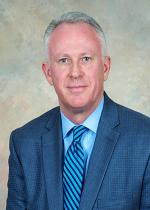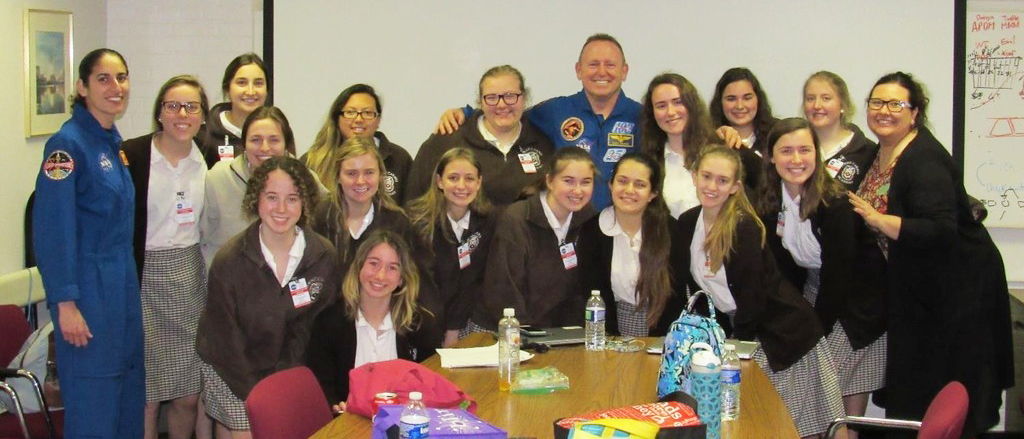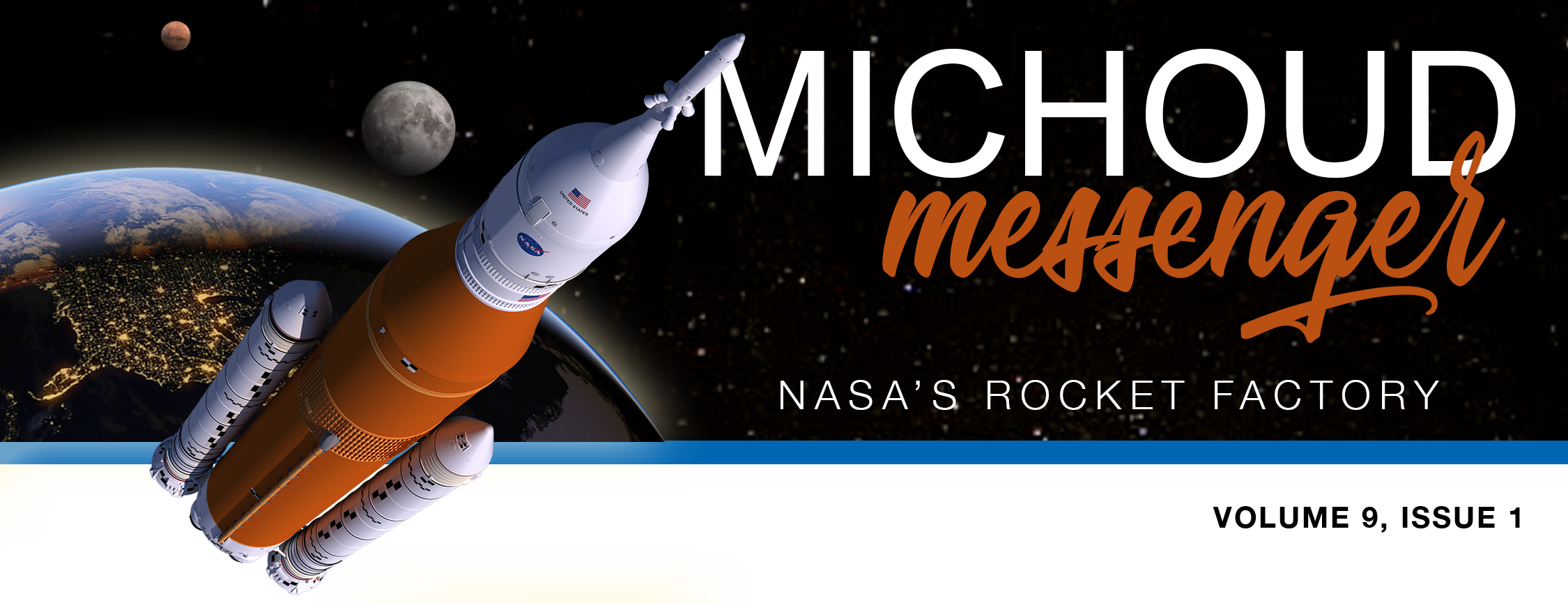
|
In This Edition |
NASA's Deep-space Rocket Intertank Loaded for Shipment, Structural Testing
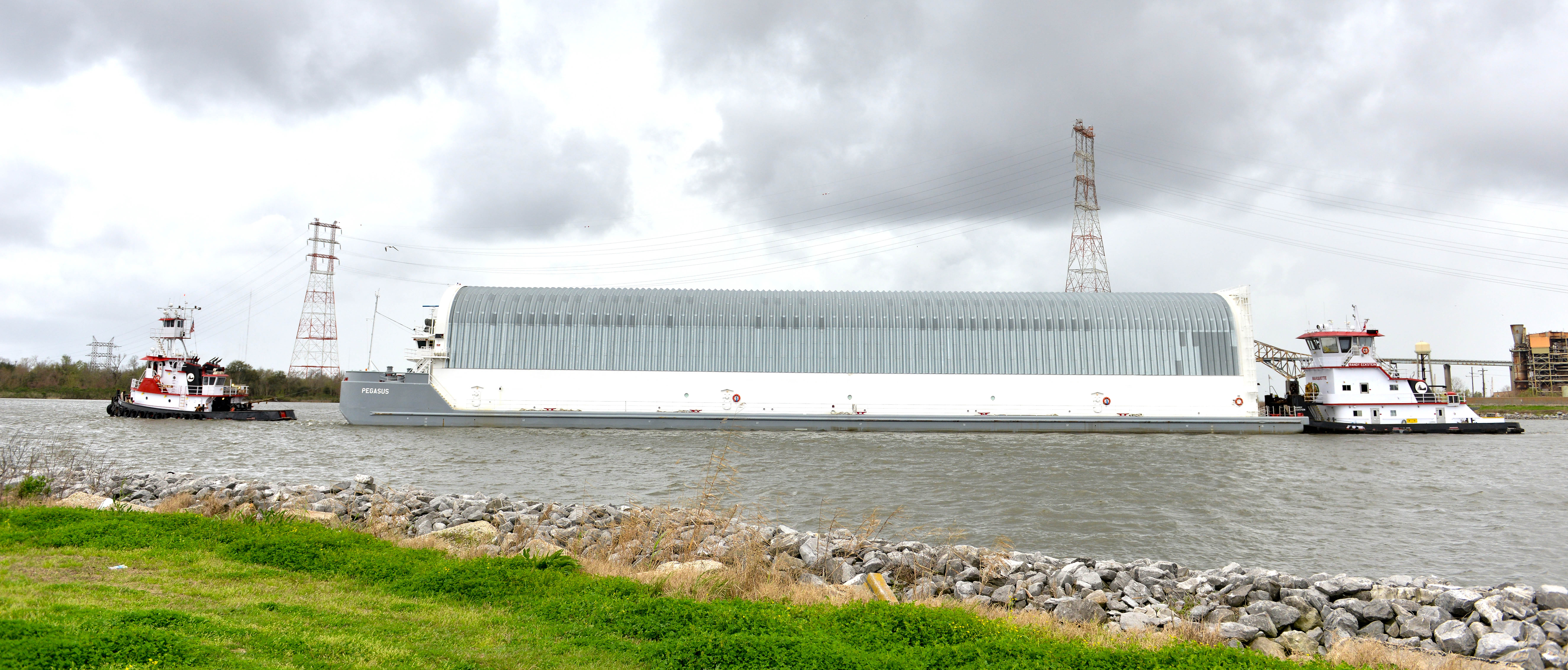
A structural test version of the Intertank for NASA's new heavy-lift rocket, the Space Launch System, is loaded onto the barge Pegasus Feb. 22, at NASA’s Michoud Assembly Facility. The Intertank is the second piece of structural hardware for the rocket's massive core stage scheduled for delivery to NASA's Marshall Space Flight Center in Huntsville, Ala., for testing. Engineers at Marshall will push, pull and bend the Intertank with millions of pounds of force to ensure the hardware can withstand the forces of launch and ascent. The flight version of the Intertank will connect the core stage's two colossal fuel tanks, serve as the upper-connection point for the two solid rocket boosters and house the avionics and electronics that will serve as the "brains" of the rocket. Pegasus, originally used during the Space Shuttle Program, has been redesigned and extended to accommodate the SLS rocket's massive, 212-foot-long core stage -- the backbone of the rocket. The 310-foot-long barge will ferry the flight core stage from Michoud to other NASA centers for tests and launch.
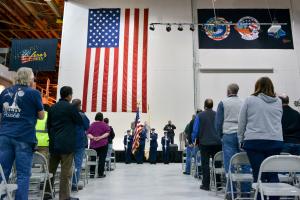 On Jan. 25, NASA’s Day of Remembrance Ceremony was held at Michoud Assembly Facility in New Orleans and other NASA centers to remember the nation’s 17 fallen astronauts. The crews of Apollo 1 and space shuttles Challenger and Columbia lost their lives furthering space exploration. Lonnie Dutreix welcomed employees and tenants to open the ceremony. The U.S. Coast Guard presented the colors, followed by Ron Adams singing the national anthem.
On Jan. 25, NASA’s Day of Remembrance Ceremony was held at Michoud Assembly Facility in New Orleans and other NASA centers to remember the nation’s 17 fallen astronauts. The crews of Apollo 1 and space shuttles Challenger and Columbia lost their lives furthering space exploration. Lonnie Dutreix welcomed employees and tenants to open the ceremony. The U.S. Coast Guard presented the colors, followed by Ron Adams singing the national anthem.
Michoud Director Keith Hefner spoke of great lessons learned from each of the tragedies. “One way to honor them ,the fallen astronauts, is through this Day of Remembrance and to never forget,” Hefner said. During the ceremony, names of all the fallen were read by Marcus Sanchez,Industrial Safety Engineer, with Bastion, as a bell was rung for each. A moment of silence was observed in closing.
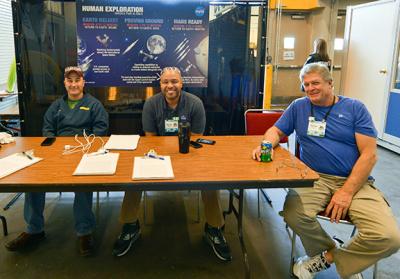
Michoud’s Mobile machine shop supported the Bayou Regional Competition this year, Aaron Pearson, a machinist with S3; Ricky Lyons, a welder S3 and Scott Curet, a machinist S3.
The FIRST Robotics Competition Bayou Regional was held March 22-24 at the Pontchartrain Center in Kenner, Louisiana. This year’s Bayou Regional hosted 57 teams representing Arkansas, Florida, Texas, Louisiana, Mississippi, Oklahoma, Tennessee and South Carolina, as well as a team from Mexico. The teams are made up of high school students and volunteer adult mentors. NASA’s Michoud Assembly Facility deployed its mobile machine shop, the Robot Repair Unit, known as the R2, to the event. The R2 Unit provided machine and weld support to all participating teams and assisted with repairs and improvements between competitions. Sixty-four jobs were completed on the first day of the event, with a total of 125 repairs performed during the entire competition. The FIRST Robotics game was announced in January, giving teams six weeks to design and fabricate their robots. This year’s game was called First Powered Up and featured two alliances of video game characters and their human operators trapped in an arcade game. Both alliances worked to defeat the boss in order to escape. Team 2080-Torbotics from Hammond, Louisiana, was awarded the competition’s highest award, the Regional Chairman’s Award. The regional competition winners were Team 456-Seige Robotics from Vicksburg, Mississippi, team 1451-Team Chaos from Picayune, Mississippi, and team 5997-Knightling Boltz from St. Gabriel, Louisiana.
| Junior STEAM Day with Mt. Carmel
On Feb. 1, a group of high school juniors, from Mount Carmel Academy in New Orleans, visited Michoud Assembly Facility, NASA's rocket factory, as part of the second Junior STEAM[TCL(SSL-C1] Day. NASA astronaut Barry “Butch” Wilmore and astronaut candidate Jasmin “Jaws” Moghbeli joined the students for lunch. Wilmore and Moghbeli explained the importance of physics and math in space exploration and emphasized that the students' generation is responsible for the future of America's space program. Wilmore described his training and experiences as a pilot of the space shuttle and shared a few comic stories about his experience as a six-month resident of the International Space Station. Moghbeli summarized her education and described how "cool" it was to pilot the H-10 (Cobra) helicopter during her time in the U.S. Navy before discussing her NASA astronaut training. |
Astronaut Butch Wilmore visits MAF
NASA astronaut Butch Wilmore, who lived and worked nearly six months on the International Station and served as the Expedition 42 commander, visited NASA’s Michoud Assembly Facility in New Orleans. He addressed the work force at Michoud on his career with NASA and how proud he is of the work that each one at the facility is doing to build the Space Launch System. Wilmore also discussed his role as astronaut liaison to the Space Launch System |
A Message from Protective Services
As Michoud Assembly Facility increases in population, traffic has also increased and so has speeding. Protective Services officers patrolling the facility are issuing more than 15 citations a day for speeding.
Personnel are reminded that a traffic stop at Michoud is no different than anywhere in Louisiana. Being pulled over on a traffic stop (even at Michoud) can be stressful, but if you follow these simple steps you can minimize the stress and resume your trip sooner.
During a traffic stop, the vehicle occupant(s) are to remain in their vehicle at all times unless the officer DIRECTS the occupant(s) to exit their vehicle. This is to ensure the SAFETY of everyone involved. At times during a traffic stop, there may be a delay before the officer approaches the stopped vehicle. The delay is due to the officer communicating through the Louisiana Law Enforcement Telecommunications System to check the vehicle’s license plate, make and model of the vehicle, registration, etc.
If a driver does not have proof of insurance, driver’s license or registration, the delay time can be greater due to the amount of additional information needed.
Michoud personnel are reminded that all occupants should obey the officer’s verbal commands at all times so that the traffic stop can be completed in a reasonable amount of time.
Additionally, the subject’s signature on the citation is required and is NOT an acknowledgment of guilt but rather serves as proof of receipt. Failure to sign a citation will result in the officer revoking the subject’s NASA-issued badge and escorting the person off the premises immediately.
NASA has a comprehensive appeal process should any subject wish to contest a citation. However, this appeal process is handled after the citation is issued and through the appropriate NASA channels.
At the Health and Safety Fair held last fall, the Energy and Water Team conducted a pop quiz for interested attendees. The pop quiz provided information about energy conservation and an opportunity to win a box of LED lights in a random drawing. The questions and answers to the pop quiz were:
For FY 2017, what was the total cost for electricity at MAF?
The answer was c.In 2017, total electrical cost for MAF was approximately $6,400,000.
For FY 2017, what was the total cost for natural gas at MAF?
The answer was c. In 2017, total natural gas cost for MAF was just over $1,000,000.
For a typical office light fixture, what is the cost savings for turning that fixture off for one hour?
The answer was a.It costs approximately $0.01 to operate a typical fluorescent fixture for one hour.While this does not seem like much, how many light fixtures are left on at MAF during lunch, overnight or over the weekend?These pennies can add up to lots of dollars in a hurry.
Congratulations to Keith Ponchot for having his name drawn from all of the responses and winning the box of LED lights.
|
April 2018, Volume 9, Issue 1 |
|
|
The Michoud Messenger is the official publication for the NASA Michoud Assembly Facility. Each issue is published bi-monthly for civil servants, contractors, and site tenants. For suggestions or submissions, please contact Susan Wilson at mary.s.wilson@nasa.gov. |
|
|
National Aeronautics and Space Administration |
MSFC Director: Todd May
|
